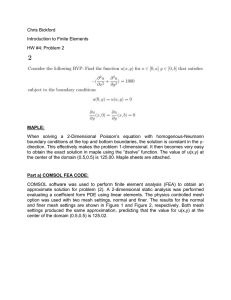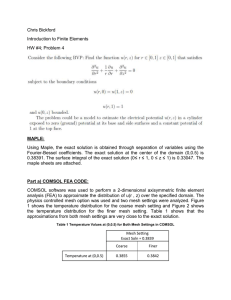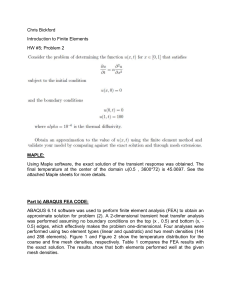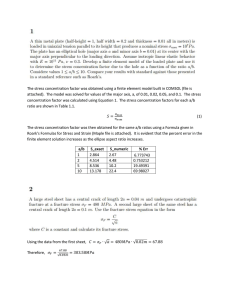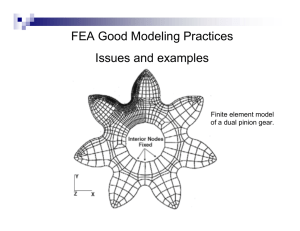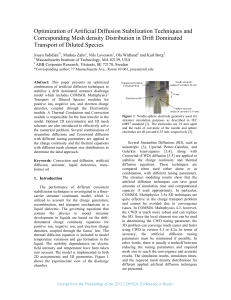Chris Bickford Introduction to Finite Elements HW #4; Problem 3
advertisement
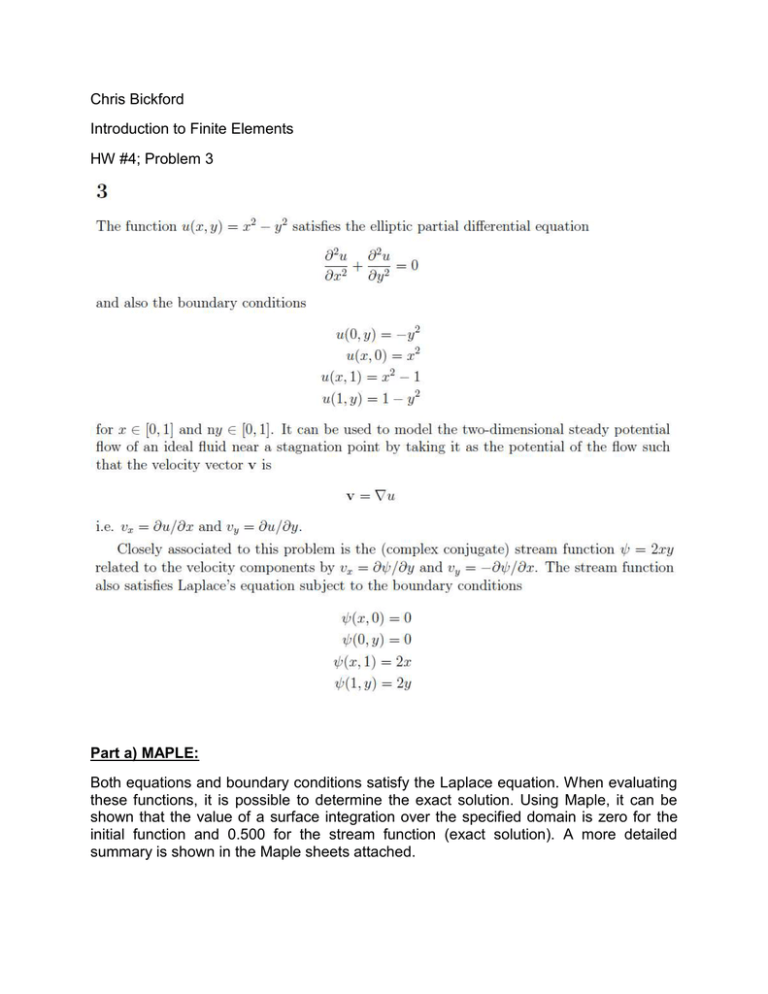
Chris Bickford Introduction to Finite Elements HW #4; Problem 3 Part a) MAPLE: Both equations and boundary conditions satisfy the Laplace equation. When evaluating these functions, it is possible to determine the exact solution. Using Maple, it can be shown that the value of a surface integration over the specified domain is zero for the initial function and 0.500 for the stream function (exact solution). A more detailed summary is shown in the Maple sheets attached. Part b) COMSOL FEA CODE: COMSOL software was used to perform a static 2-dimensional finite element analysis (FEA) to obtain several approximate solutions for problem (3). These approximations were solved for using different two different mesh density settings in the physics controlled mesh option (Normal and Finer) and three element types (Linear, Quadratic, Cubic). The results are summarized in . All approximations are very close to zero and improve as the mesh becomes more refined and the order of the element is increased. Table 1 COMSOL FEA Solutions: Surface Integration Values Surface Integration of COMSOL Approximation Element Basis Function Order Exact Solution = 0 Mesh Density Setting Normal Finer 1 -2.04E-06 -7.83E-07 2 -4.95E-17 4.29E-16 3 1.64E-15 - Figure 1 Normal Mesh Setting: Linear Element Type Part c) ABAQUS FEA CODE: ABAQUS 6.14 software was used to perform finite element analysis (FEA) to obtain an approximate solution for problem (3). A 2-dimensional static heat transfer analysis was performed assuming the thermal conductivity is 1 and applied analytical boundary conditions in accordance with the problem statement. Quadratic elements were used with a mesh density of 256 elements. Figure 2 is fringe plot which shows an approximation for the value u(x,y) over the specified domain. Figure 2 Two-Hundred Fifty-Six (256) Elements: Quadratic Element Type
